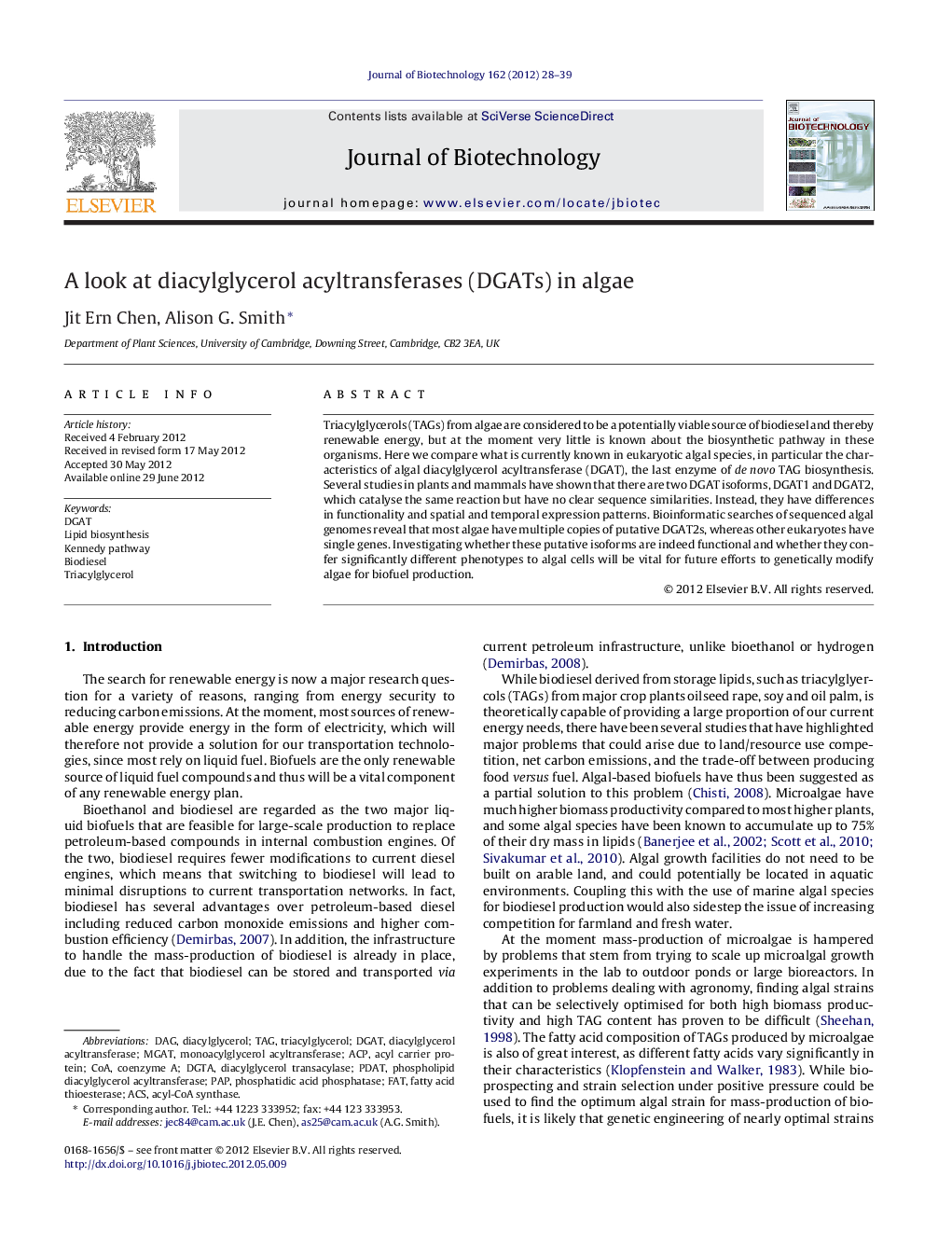| Article ID | Journal | Published Year | Pages | File Type |
|---|---|---|---|---|
| 23648 | Journal of Biotechnology | 2012 | 12 Pages |
Triacylglycerols (TAGs) from algae are considered to be a potentially viable source of biodiesel and thereby renewable energy, but at the moment very little is known about the biosynthetic pathway in these organisms. Here we compare what is currently known in eukaryotic algal species, in particular the characteristics of algal diacylglycerol acyltransferase (DGAT), the last enzyme of de novo TAG biosynthesis. Several studies in plants and mammals have shown that there are two DGAT isoforms, DGAT1 and DGAT2, which catalyse the same reaction but have no clear sequence similarities. Instead, they have differences in functionality and spatial and temporal expression patterns. Bioinformatic searches of sequenced algal genomes reveal that most algae have multiple copies of putative DGAT2s, whereas other eukaryotes have single genes. Investigating whether these putative isoforms are indeed functional and whether they confer significantly different phenotypes to algal cells will be vital for future efforts to genetically modify algae for biofuel production.
► We examine current knowledge about TAG biosynthesis in algae, focusing mainly on diacylglycerol acyltransferases (DGATs). ► We identified in silico putative DGATs from several algal species where complete genome sequences are available. ► Putative algal DGATs were analysed and compared to characterised mammalian, higher plant and fungi DGATs based on their primary amino acid structure. ► Multiple DGAT2 genes were identified in nearly all algal species, but functional studies are needed to verify the enzyme they encode.
